R.S. Praveen Kumar
“It has been my dream to be a doctor since my school days, but the dream seemed a distant one considering that my parents are struggling to make a living as labourers in our tribal hamlet. My dream of being a doctor would have shattered, if not for the free long-term intensive NEET Operation Emerald program. I have bagged all India rank of 85 in the ST category and it is highly likely that I will get admission in AIIMS. I want to become a cardiac surgeon and pay back to society by serving poor people in rural areas.” – D Girija, student, Social Welfare Centre of Excellence, Gowlidoddi.
“I was thrilled when I saw our atmospheric payload SWAEROSAT-I taking off majestically without technical glitches from the Tata Institute of Fundamental Research centre, Hyderabad. I feel proud to be a member of this exciting scientific mission and we launched the SWAEROSAT-I as a symbol of aspiration of millions of marginalized children in the country.” – J Divya, aerospace camper of Social Welfare Schools.
“Acting in the Telugu movie ‘Mallesham’ gave me fame in my village and school. Earlier, many of our villagers used to look down upon us since my father is a sweeper and mother, a labourer. But now, the same villagers appreciate my parents after seeing my acting in the movie.” – Sri Lakshmi, student, Social Welfare Fine Arts School.
“On my way to the peak of Mt. Everest, I came across many dead bodies. The ridge walk in the night was very risky and dangerous. A single wrong step here would mean instant death. But, I pulverized every hurdle and I went ahead with the mission in the face of adversity, I cannot even describe how difficult the climb was, but I resolved on achieving the target and hoisted a portrait of Dr BR Ambedkar and India’s tricolor on Mt. Everest. The Swaeroes Ten Commandments* have been a source of inspiration to me.” – Malavath Poorna, Youngest girl (13 years) in the world to conquer Mt. Everest.
“I had trained very hard before the Khelo India 2020 games with an aim to win medals. My hard work paid off and I was quite thrilled to win two gold medals at the prestigious sporting event. My father runs a roadside tea shop and mother is a housemaid.” – Nandini, student, Social Welfare School.
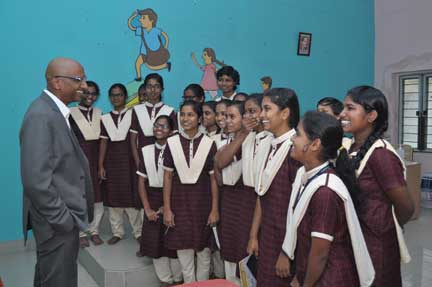
Girija, Divya, Sri Lakshmi, Poorna and Nandini all over came hurdles, that people living on the fringes of society experience, to make it big in their chosen fields. Poor and marginalized children in India have no access to quality education or to the opportunities that a knowledge based economy offers. Centuries-old discrimination, caste related stigma, illiteracy, abject poverty, structural barriers and inequalities push children from deprived communities into a state of despondency and low self-esteem and, in a way, strangle their dreams. The Telangana Social Welfare Residential Educational Institutions Society (TSWREIS) with 268 institutions and the Telangana Tribal Welfare Residential Educational Institutions Society (TTWREIS) with 180 institutions impart education to more than two lakh students in English medium up to the graduation level. Students are nurtured in a safe, stable and structured ecosystem. The Welfare Residential Societies are working with a vision to uplift poor families and lead them into a bright future by nurturing the dreams of the students in marginalized communities.
An important feature of these institutions is that the staff members act as local parents. Teachers stay on the campus and handhold the students in curricular and co-curricular activities and provide round the clock care.
Of late, the Welfare Institutions have come into the notice of educationists and policy makers from different parts of the country and the world for their path-breaking transformational work in sending hundreds of students from nondescript villages/tribal hamlets to the country’s top educational institutions and for bringing laurels to India and the state of Telangana in mountaineering and sporting events. In a major acknowledgement of the TSWREIS’ initiatives, the world renowned Harvard University (USA) made a case study on ‘How Telangana social welfare residential schools are disrupting the status quo in the education sector in India’. This is the first time that any such intervention in education for the marginalized is being acknowledged by a celebrated university. The Organization for Economic Co-operation and Development (OECD), also appreciated the Social and Tribal Welfare Institutions for launching student-led Village Learning Circles (VLCs) in Telangana’s rural villages and tribal areas to help impoverished students continue their learning even during the extraordinarily challenging times of the covid-19 pandemic. This article provides a gist of the various reforms being initiated by social and tribal welfare residential educational institutions to empower students, teachers and parents.
Not so long ago, the Welfare Institutions painted a grim picture and suffered from poor learning outcomes and very low enrolment rate in higher education institutions. These students were very shy and their confidence levels were abysmally low. Teaching methods were mundane and accountability on the part of the teachers and school leaders was considerably low. Teachers and students were not motivated enough and lacked proper guidance. Besides, the students were not exposed to activities beyond the classroom and education remained mere transmission of information in a rigid atmosphere. Teachers mainly focused on the completion of the syllabus and preparation of students for public examinations. Regrettably, many students were scared of people who spoke English as it made them feel inferior. Students were also afraid of revealing their caste identities, because of the demoralizing baggage of caste related stigma.
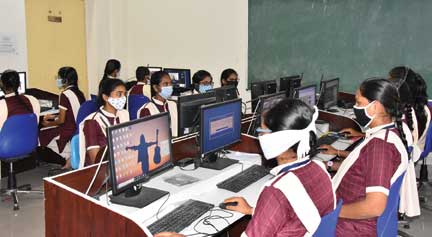
Keeping these challenges in perspective, in the last six years, TSWREI and TTWREI Societies have been charting a radically different path to empower students, teachers, school leaders and parents. In line with their vision, these institutions introduced a wide range of curricular, co-curricular and extra-curricular programmes hitherto unheard of in the annals of the government education sector in India. Students are the ultimate beneficiaries of these programmes and a conscious effort is made to keep them focused on their goals through a variety of activities. Even students from the most deprived sections of the society have tremendous potential; we need to pull them out of a toxic ecosystem where they are not considered an asset, but an economic burden, particularly girl children.
Different innovative programs like Summer Samurai Camps, English-Plus Clubs, Student Councils, Flipped Class Pedagogy, Modular Teaching, Super Students Lecture Series, Teaching Assistants, Quartet, Coding, Robotics, Mirror Project, Adventure Sports, Operation Blue Crystal, Operation Emerald, Lecturers of Life, Kitchen Gardens, Ignite Fest, Literary Competitions, Algorythm, Swaerolympics, Swaeroes Ten Commandments, Swaeroes Network, Career Counseling Cells, etc., were introduced aimed at promoting creativity, scientific temper, competitive spirit, sporting talent and leadership and communication skills. The institutions make it mandatory for every child to participate in carefully-designed seamless competitions and activities throughout the year. The idea behind the introduction of these programs is to break the negative stereotypes and emancipate children from a sense of inferiority complex and transform them from mere sceptical observers to go-getters who dare to do big things in their lives, unmindful of their painful past.
To liberate students from a sense of hopelessness and make them proud of their identity, a conscious effort is made to discourage members of the Societies from using words such as Dalit, Adivasi, Harijan, Pichchde, etc. To do away with negative stereotypes, an identity re-engineering mission has been launched. Students are nudged towards a new identity, ‘Swaero’, SW stands for ‘State Welfare’ and ‘Aero’ for ‘Sky’, meaning sky is the limit for swaeroes. Today, more than two lakh students are proud to call themselves swaeroes. Some students even have the name swaero on their birth certificates and Aadhar cards as part of their new identity which is aspirational and progressive. The main objective was to tell students that they are not inferior to anyone in this world and that they have tremendous potential in them to transform their own lives.
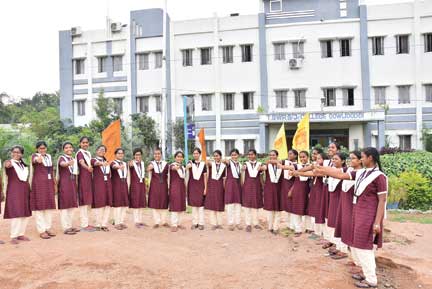
Students were taught that the weak continue to have a weak will as they are not aware of their strengths and that the strong impose their will and leave the weak with no choice. The Swaeroes Ten Commandments were introduced as an antidote to the stigmatized experiences in the students’ lives. The Swaeroes Ten Commandments (I am not inferior to anyone, I shall be the leader wherever I am, I shall do what I love and be different, I shall always think big and aim high, I shall be honest, hardworking, and punctual, I shall never blame others for my failures, I shall neither beg nor cheat, I shall repay what I borrow, I shall never fear the unknown, and I shall never give up) have become a Swaero Operating System (SOS) and all the students take oath everyday to reaffirm their commitment to practising the Ten Commandments in their lives.
Once upon a time, our students were fearful of anyone who spoke English. Among the radical changes brought in by the Welfare Institutions was making English the medium of instruction and introducing English-Plus (E-Plus clubs) club activities. In E-Plus clubs, students are encouraged to speak freely without the fear of making mistakes, the teachers merely act as facilitators. The E-Plus club activities have had a tremendous impact on the English communication skills of the students and as a result their hesitation and phobia of the language has also vanished.
In yet another novel program, the welfare schools introduced a first of its kind ‘Earn While You Learn’ program. Students who have a talent for teaching, teach their peers in a live telecast on the government run MANA TV. These students are paid Rs 1500/- per class and the money is deposited in their bank accounts for their higher education.
The Residential Schools train their students for leadership skills by assimilating them into the workings of the Societies. For instance, the Student Council, which is elected through democratic means, shares the burden of the principal in the upkeep of the school and maintenance of order. Students run various clubs on their own even in the absence of teachers. ‘Teaching Assistants’ supplement the efforts of teachers in the classroom. ‘A Quartet’ system is organized in such a way that every group of four is as heterogeneous as possible and these quartets are the platforms for self and collaborative learning in schools.
The Welfare Institutions believe in self learning and this is reflected everywhere in the schools. For instance, in most schools, huge mirrors are placed in all corners of the school premises so that children can look at and talk to themselves and improve their language and communication skills. The Welfare Institutions also provide many opportunities for field trips including pan India tours under the ‘Bharat Darshan’ program. The Social and Tribal Welfare Institutions created a unique record by engaging more than 70000 children in summer camps offering 58 different activities. In the Summer Samurai Camps, the students are taught horse riding, folk arts, western music, martial arts, journalism, dancing, coding, public speaking, organic farming, advanced English communication, robotics, abacus, painting, water sports, film making, vedic maths, stock market and hospitality. This is perhaps the biggest ever state-run summer student camp in the country.
The Welfare Societies also established a Higher Education Cell (HEC) to fulfill the aspirations of students who desire to study further. The HEC oversees the admission of students into various higher education institutions across the country and organizes specialized coaching classes for students seeking entry into IITs/NITs, medical colleges, law universities, IIMs, AIIMS (Nursing) and other top-notch universities/institutions. It’s truly noteworthy that many students have been securing all India level ranks in general, as well as reservation categories. In the last five years, a large number of our students have joined prestigious higher educational institutions in the country. The remarkable journey of Social Welfare Residential students from nondescript rural villages and remote tribal areas to top-notch higher education institutions truly reflects the students’ dogged determination to succeed in the face of abject poverty and adversity. The Society also distributes free laptops to deserving poor students who secure admission in IITs/NITs, medicine, law universities, etc., so that no meritorious poor student lags behind their affluent classmates.
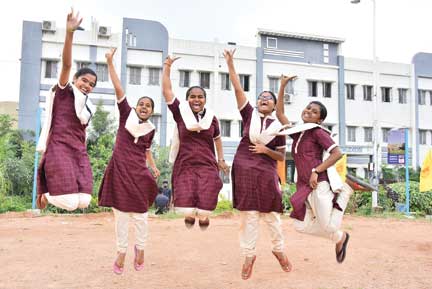
Operation Blue Crystal and Operation Emerald programs were launched to provide long-term NEET coaching to SC/ST students who have no financial means to take coaching in corporate institutions. The two coaching programs are a boon to marginalized students and ever since the launch of these programmes, the Welfare Institutions have been witnessing hundreds of students joining medical colleges in the last three years. For instance, in erstwhile Andhra Pradesh, less than five of our students used to secure seats in medical colleges every year. The number of students entering medical colleges increased from 5 in 2013 to 142 in 2020, an incredible feat by any standard. The results of the Welfare Institutions in public exams are always 15 per cent above the state average. The social welfare degree colleges set a new record by securing an average pass percentage of 90 as against the state average of 36 and clinching state level ranks in science, commerce and computer streams.
Malavath Poorna brought great honour and glory to the state of Telangana and India by becoming the first ever tribal woman in the world to conquer the six tallest mountain peaks located in six continents across the world. Poorna has become a torch bearer and a source of inspiration for millions of marginalized girls across India. Poorna’s expeditions triggered a powerful chain reaction in Telangana’s rural villages and tribal areas and many poor parents have been sending their children, especially girls to the residential schools, colleges and higher learning institutions in large numbers year after year. On the sporting front, Nandini of Narsingi Social Welfare Institution added another feather to the TSWREIS’ cap by bagging gold medals in long jump and 100 mts hurdles at the Khelo India Youth Games, 2020, Guwahati. In a rare feat in the history of TSWREIS and perhaps for the first time in India, the students of TSWREIS launched tiny payloads ‘Swaerosat-1 and 2 ’ into the atmosphere from Tata Institute of Fundamental Research (TIFR, Hyderabad), which was hailed as a symbol of the aspiration of millions of marginalized people in the country.
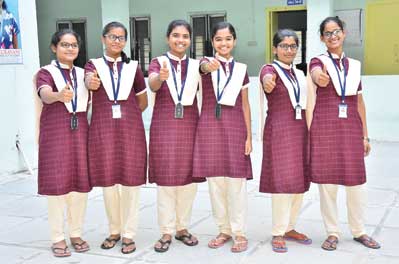
The Societies also emphasize on organic engagement with the community and at every conceivable opportunity, interact with both parents and community. Unique programs like Quest, Impact and Amma Nannala Halchal have brought about remarkable changes in educating the parents about the importance of their children’s education and the evils of girl child marriages. These initiatives have been instrumental in bridging the gap between the teachers and the parents and in making parents important stakeholders of TSWREIS. Halchal competitions and future parent training programs are taking the parent-teacher relationship to the next level by fostering mutual trust. The Societies also train some teachers in career counseling; exposure visits to reputed educational institutions in the country are organized for teachers and schools to learn and implement best practices. Training programs are organized for all teachers regularly and panel inspection teams assess the institutions on different parameters and every year the best teachers, principals, schools and staff are honoured.
The Welfare Institutions believe in seamless experimentation, syncing themselves with emerging trends in the education space and emerging global market. Envisioning the sweeping changes in the workplace in the 21st century, the Welfare Institutions have been trailblazers in establishing specialized schools: School of Fine Arts, Sainik School, Sports Academies, Coding Schools and Centres of Excellence Colleges (COEs), Earth schools, Vocational Colleges and Freedom Schools. TSWREIS has taken a unique step in setting up the first-ever Armed Forces Preparatory Degree College for Women with the vision to groom marginalized young women into prospective officers of the Indian defence forces, thereby helping them break the social taboo of the weaker sex and enter male dominated bastions. Coding schools were launched to teach poor children computational thinking, coding and data analytics skills.
The turnaround in the Telangana government residential schools wouldn’t have been possible without the trust of both the government and the larger community. The teaching community which is the pivot in this entire revolution drew its critical support from the community. The government and management played a catalytic role in this transformation. The Telangana model of residential education has a lot of lessons for the country in the arena of inclusive development and achieving the much needed equality guaranteed by the constitution.
*The Swaeroes Ten Commandments are an oath that the students of the social welfare schools take every day. Read more about this practice later in the article.
Note: The views expressed here are the author’s personal views and are not the official version of his organization.
The author is a vet by education, cop by profession, and educator by passion. Not satisfied with what he achieved in the police service, he took a deep dive to transform the lives of marginalized children through quality education in Telangana. He deeply believes that unconditional love is the foundation for learning anything. He has a weakness for reading and running. He can be reached at praveenips@gmail.com.
